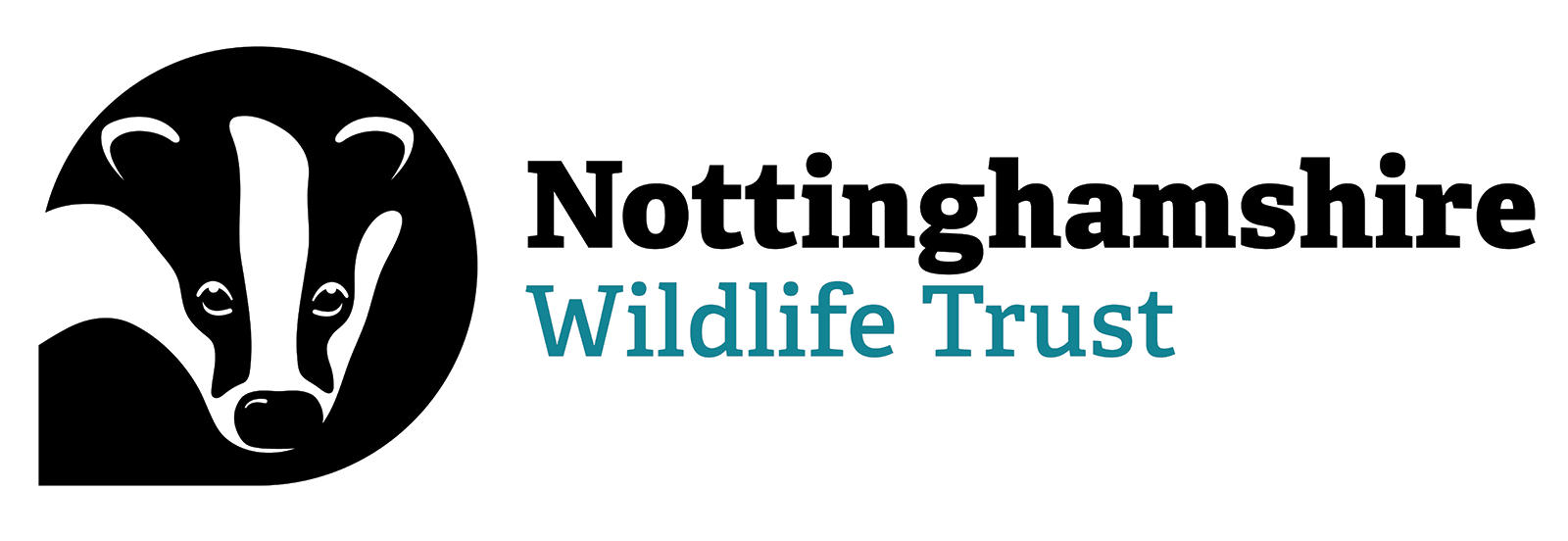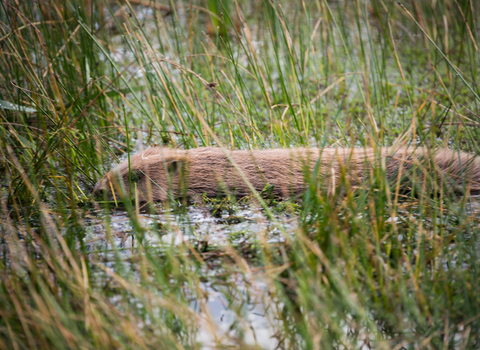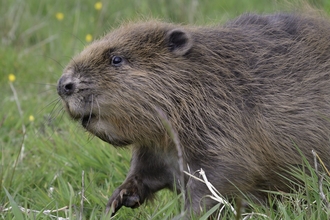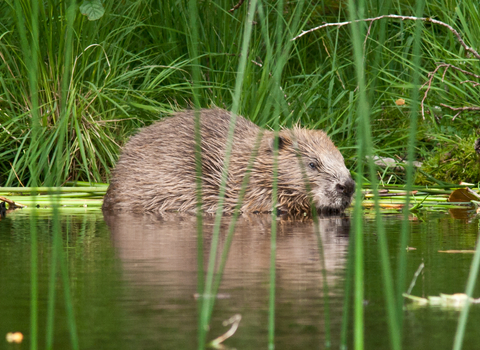Thank you for helping us bring beavers back
We did it – beavers are back in Nottinghamshire after more than 400 years.
A very big thank you to all the donors who helped us achieve this. Your support has bought back these enigmatic engineers to our county. A pair and a family with 4 kits have been released into an enclosed section of Idle Valley Nature Reserve.
Beaver's born in Nottinghamshire! (https://youtu.be/J2_huxIaYS4)
A look back at our beaver's journey, from arriving in November 2021 to present day...with the first beaver kits born in Nottinghamshire in over 400 years!
Idle Valley Beaver Updates
November 2024: Timber! And teamwork!
Beaver - trunk slide rather than 'Timber!' (https://youtu.be/iud4Jw5xvs0)
More of a trunk slide than a call of 'Timber!'
Beaver teamwork (https://youtu.be/FOVCE4o6YV0)
The beavers have been working as a team felling this willow.
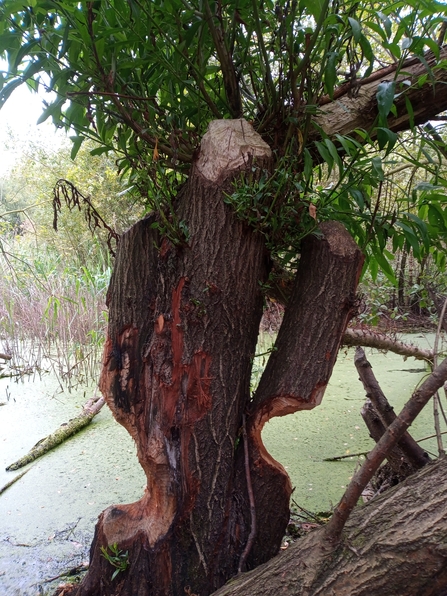
Credit Rachel Rutherford
This is what the willow tree looked like back in September 2024 when the water vole families were being released in the beaver enclosure. The beavers had clearly started to make in roads into the trunk.
October 2024: Bath time & more kits on camera
More kit footage has been captured on our wildlife camera! Plus some extra surprise insight into our beavers' wash routine...
October 2024: Beaver Kit Caught on Camera
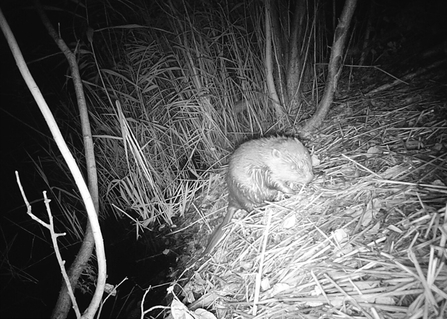
Photo © Nottinghamshire Wildlife Trust
We have evidence of successful breeding again this year - a beaver kit was spotted on one of our trailcams!
June 2024: Melanistic beaver
Melanistic beaver at Idle Valley (https://youtu.be/RKczKbw9nA0)
Melanistic beaver filmed at Idle Valley Nature Reserve beaver enclosure in June 2024.
October 2023: Beaver pair seen bonding
Beaver pair bonding (https://youtu.be/iFu7jadZ9-c)
It’s been a successful two years for the beavers, with our previously single beavers pairing up and raising three kits. In this recent video, you can see them wrestling and bonding by touching noses. This indicates that are still a pair and may breed again next year!
January 2023: Kits are doing great
We are happy to report that we have recently trapped and microchipped our two new beaver kits - who were both male and a very healthy weight at approximately 9kg!
The process was very quick so that we could get them back to their parents as soon as possible, and they both swam off happily. We subsequently saw them on trail cameras with their parents, feeding and grooming. The new family have built a big new lodge and are very active.
The original family are felling lots of saplings to expand their lodge, so they may be preparing for kits this year.
Both families are managing their environment in ways that benefit other species, including removing willow from reedbeds, which will improve habitat for bittern and snipe, piles of wood in the water that benefit aquatic invertebrates and fish, and small channels and scrapes that create habitats for spawning amphibians.
If you would like the chance to explore the positive impacts the beavers are having on their habitat, book on to one of our Beaver Enclosure Tours!
Beaver kits released (https://youtu.be/2sW6SY0W5fc)
Video credit: Janice Bradley
Dec 2022: Beaver kits born in Notts!
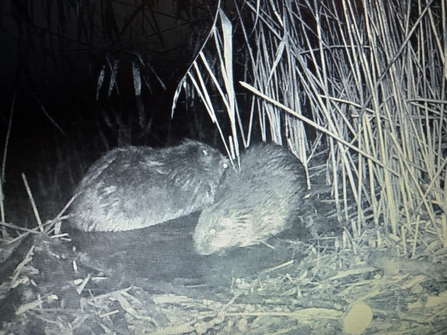
Returning beavers have been anything but Idle since their return to Nottinghamshire. There is evidence of new beaver kits on the trail cam which indicates the two single adults paired up quicker than expected and produced kits this year!
Read the full story here.
July 2022: Positive impacts
Nottinghamshire Wildlife Trust has today issued an update on the positive impact that the biggest group of beavers ever released in England is having at its largest site – Idle Valley Nature Reserve near Retford in north Nottinghamshire.
The eight beavers - a family with four kits; plus a separate male and female that the Trust hopes will form a breeding pair, arrived in Nottinghamshire from Scotland last November and now live in a specially created enclosure covering more than 58 hectares.
In addition to returning beavers to the Nottinghamshire landscape where they previously thrived until being hunted to extinction at least 400 years ago, the Trust’s aim is to transform key areas of the reserve’s wetland habitat to benefit a range of other species including wading birds, amphibians, dragonflies and other wildlife.
The re-introduction, made possible thanks to financial support from Severn Trent as part of their Great Big Nature Boost, represents the Trust’s commitment to utilising natural processes to enhance the wildlife habitats at the huge reserve which sits alongside the River Idle, to make it wilder and more resilient to the impacts of climate change.
A gnawed tree, showing that beavers have been busy at Idle Valley
Wildlife Trust staff and research students from project partner Nottingham Trent University have been monitoring their progress - noting signs of their positive impact on habitats within their enclosure already, after just a few months.
Speaking about how well the beavers had settled in, Nottinghamshire Wildlife Trust’s Head of Nature Recovery (North), Janice Bradley MBE said, “Signs of feeding and teeth sharpening were seen within days of their release. By January, there was plenty of evidence that they had settled in, including coppiced willow trees and gnawed branches. We also soon noticed paths through vegetation alongside the lakes and mud ‘slides’ at their favourite spots for entering the water. The beavers have also ring barked some of the trees, which we hope will develop into standing deadwood, one of the rarest habitats and essential for declining species such as lesser spotted woodpecker, willow tit and tree-dwelling bats. ”
The beavers’ activity soon began to control the growth of invasive scrub and open up new areas of habitat for other species and in January volunteers were trained to check the fences around the enclosure to help ensure the animals’ safety and to prevent the risk of escape. Despite the group settling in well, in February a member of the project team discovered that one of the young kits had died. With no evidence of injury, a post-mortem examination indicated that the kit had died of natural causes. Whilst sad, it was not unexpected to lose a kit from such an unusually large litter during its first winter.
In addition to research visits and monitoring checks, additional evidence of the beavers’ positive impact has been gathered during a series of exclusive tours of the enclosure – organised to provide visitors with a behind the scenes experience and to help share knowledge of the benefits of these amazing creatures, often described as ‘nature’s wetland engineers’. In June, members of the Wildlife Trust’s Young Rangers team, Keeping it Wild youth volunteers and children from the Idle Valley Wildlife Watch Group were also given a behind the scenes tour.

A Wildlife Watch group at Idle Valley being given a tour of the beaver enclosure
Janice added, “The Idle Valley Nature Reserve landscape has been created by humans through sand and gravel quarrying , but through habitat restoration and years of subsequent management it has developed a high value for wildlife, hence its SSSI designation, but has still further potential for the restoration of even more nature. Building on our experience across the county, we are committed to making the habitats more self-sustaining by embracing natural processes, where possible, to make the reserve ‘wilder’. The reintroduction of beavers, alongside a revised grazing regime and the installation of water level controls to help improve the conditions for wading birds and other wildlife, has made a real difference already and we’re hugely excited at what can be achieved in the years ahead.”
A comprehensive monitoring programme will assess the longer-term impact of the beavers and identify opportunities to improve habitats further for vulnerable species such as otter, water vole, bittern, turtledove and nightingale.
The Wildlife Trust believes that Idle Valley Nature Reserve can be a vital part of the UK Nature Recovery Network by acting as a catalyst for the restoration of nature across the wider valley where it has been investing and supporting other landowners for over 30 years.
More evidence of beavers working at Idle Valley
Janice explained: “The reserve is already a nationally recognised wildlife haven and a key destination for migratory birds, and the beavers are helping speed up the process of making the site even richer for wildlife. We want to establish an environment and a legacy which protects, and reconnects habitats, allows native species to flourish, supports the re-introduction of lost species and acts a beacon as we seek to restore 30% of land for nature across the UK.”
The Wildlife Trust is committed to embracing natural processes such as grazing and management by key species to enhance the huge reserve and believes that the vast scale of the site, one of the largest protected nature reserves in the East Midlands, means that it can also provide opportunities for people to experience a wilder connection with nature.
The beavers were originally living on Tayside in Scotland and after a period of quarantine and health checks at specialised facilities at Five Sisters Zoo, the Beaver Trust carefully transported them to their new home in Nottinghamshire. The charity brought beavers to the site as part of a long-term vision to make the site wider by enhancing; protecting and connecting habitats as part of efforts to ensure 30% of land across the UK can support nature’s recovery by 2030.
Adult Beaver at Idle Valley (https://youtu.be/T1f3ND13PAA)
Video of an adult beaver gnawing at a tree at Idle Valley
January 2022: Plenty of field signs
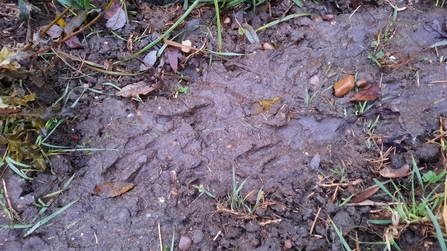
Elliott Kean
Lots of signs in the enclosure. Prints in the mud, dung, gnawed trees and branches, mud slides and channels through the water.
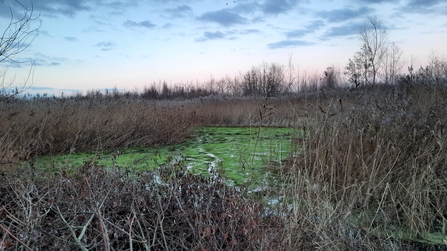
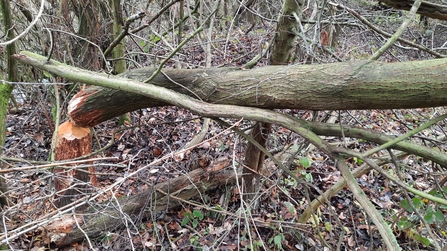
22nd November 2021: First signs of activity
We spot the first signs of beaver activity. As there is no public access into the enclosure, visitors to the reserve aren't at risk of injury from trees falling as a result of beaver activity. It's amazing to see such incredible field signs so quickly.
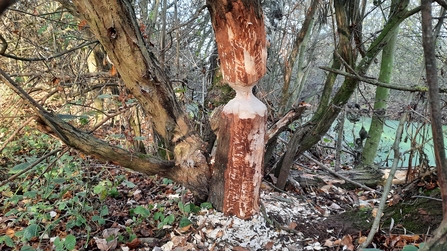
Elliott Kean / Nottinghamshire Wildlife Trust
9th November 2021: Beaver Release
The father of the family group has been reunited with his kits. He was a little shy and wasn't quite ready to be transported last week, but has now joined the other beavers on the reserve. This means there are now a total of 8 beavers in Nottinghamshire, reintroduced to enhance the natural environment and improve water quality.
Beaver release - dad released (https://youtu.be/WEO_q7gfM2k)
Video © Nottinghamshire Wildlife Trust
5th November 2021: Beaver Release
A family group of beavers which includes 4 kits and a pair of beavers were released into the enclosure at Idle Valley Nature Reserve.
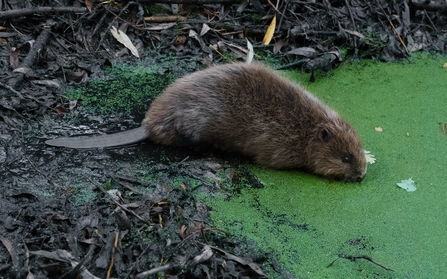
Photo © Kirsty James
Our beaver project
We have created one of the largest beaver enclosures in the UK and in November 2021 released 8 beavers, including 4 kits (baby beavers) to this area securely separated from the River Idle and closely monitored.
Idle Valley Nature Reserve is the largest site in our care. Beavers, alongside our conservation grazing programme, allow us to harness natural processes and unlock more of the site’s potential for wildlife.
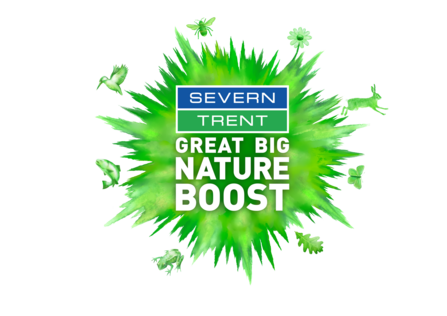
We’d also like to extend our thanks to Severn Trent Water, whose Great Big Nature Boost scheme generously backed the beaver reintroduction project from the start.
Our work continues!
Frequently Asked Questions
Why have we reintroduced beaver to Nottinghamshire
Beavers aren’t just about the reintroduction of a single species – it’s about the reintroduction of an entire ecosystem that’s been lost.
We’ve reintroduced beavers to unlock the power of nature! Beavers are nature’s finest ‘wetland engineers’. As they dig, chew through trees and create deep pools, they help create habitats that benefit other wildlife.
Why Idle Valley Nature Reserve?
The introduction of beavers kick starts our efforts to harness natural processes across the huge Idle Valley Nature Reserve alongside the expansion of our conservation grazing programme, other habitat work across the reserve and our work with other landowners to restore habitats across the wider Idle Valley landscape.
This project could also hopefully pave the way for further beaver reintroductions in Nottinghamshire, as well as across the UK!
Where are the beavers?
The beavers are in an enclosed area of Idle Valley Nature Reserve, near Retford. We have created one of the largest enclosures in the UK which is where the beavers have been reintroduced. It’s over 60ha and keeps them separate from the River Idle where they can be closely monitored.
If you’d like to see the beavers there are two viewing points with views into the enclosures. There is an area to park on Chainbridge Lane. See our reserve map for details. Alternatively, use the following What3Words locations: ///tricycle.hilltop.furniture or ///animate.snippets.jungle and coordinates 53°21'51.3"N 0°56'06.5"W or 53°22'04.4"N 0°56'23.8"W.
For the best chance to see signs of beaver activity and maybe even the beavers themselves, book onto one of our tours.
Can I come and see the beavers?
There are two viewing points where you can see into the enclosure. Beavers are fairly elusive creatures and will quickly return to their lodges if disturbed. However, it may be possible to catch a glimpse. As with any wildlife watching, you’ll need to be patient. They're most active at dawn and dusk during the summer months.
If you’d like to see the beavers there are two viewing points with views into the enclosures. There is an area to park on Chainbridge Lane. See our reserve map for details. Alternatively, use the following What3Words locations: ///tricycle.hilltop.furniture or ///animate.snippets.jungle and coordinates 53°21'51.3"N 0°56'06.5"W or 53°22'04.4"N 0°56'23.8"W.
For the best chance of seeing the beavers and signs of their presence, book onto one of our tours.
What do the beavers do on site?
Beavers are a special species that can play a particularly crucial role. By digging channels and damming watercourses, they create diverse wetland areas and homes for other animals like otters, water voles and water shrews. As they chew and fell trees they will help control the spread of scrub and help maintain open habitats for a range of wetland birds for which the reserve is best known.
There isn’t running water through this section of the reserve so the beavers won’t be changing water flow by damming but we’ll still see all the other benefits that beavers bring.
Where did Nottinghamshire’s beavers come from?
The 8 beavers reintroduced in November 2021 were humanely trapped and translocated from the Tay Valley in Scotland. With support from experts at the Beaver Trust, Seven Sisters Zoo and Nottingham Trent University we were able to bring beavers back to Nottinghamshire for the first time in over 400 years.
Are beavers native?
Beavers are a native species to Britain. There were lost from our wetlands hundreds of years ago when they were hunted for their fur, meat and scent glands.
How big are beavers?
As large as a Labrador dog, Beavers are Britain’s largest rodent!
What do they eat?
Beavers are herbivores – meaning they only eat plants. It’s a common misconception that they eat fish. Beaver eat leaves, twigs, bark and roots. They’ll eat bramble and other plants too and are big fans of Himalayan balsam which is an invasive non-native plant species that can spread easily and become problematic for our native wildflowers.
How quickly do beavers breed?
Baby beavers are called kits. Beavers are monogamous and tend to mate for life. They’ll give birth to 1-4 kits which then stay with their parents for a couple of years before leaving to start their own family. Whilst living in strict family groups, only the dominant pair will breed. Sometimes, young beavers can stay with their family to help their parents breed.
Beaver kits can be vulnerable to predation by foxes, birds of prey and potentially otters, so not all kits are guaranteed to survive.
We have plenty of space and resources in our enclosure for the beavers to expand their families. Eventually, in many years to come, we may eventually need to re-home older offspring to other projects.
What happens if they escape?
Due to the size of our enclosure, the beavers will have everything they need within this secure zone making it highly unlikely they’ll escape. We have staff and volunteers regularly checking the fencing and in the unlikely event of a beaver escaping the enclosure, our team are trained to safely trap and release the beavers back into the enclosure.
Will beavers kill trees?
Beavers don’t kill trees, they coppice native species like willow and alder. This means cutting a tree back to near its base where new growth will begin. This is a common woodland management practice to encourage light the ground which allows ground dwelling plants to grow and create dynamic habitats. Beaver are often known as eco-engineers, they are only doing what our team of rangers would be, but working 24/7 and doing it far better (sorry team!).
Non-native trees such as beech and cedar will die when felled but are not the preferred tree species for beavers. If felled, deadwood provides a home for all kinds of invertebrates and even perched for birds.
Individual trees can also be protected from the beaver’s activities if necessary using special paint or fencing.
It is important to remembers that healthy wetlands store carbon, and that by reintroducing beavers to Idle Valley we are harnessing natural processes to tackle the nature and climate crises.
Do beavers cause flooding?
Beavers can make rivers less prone to flash floods, reducing flooding by holding water in 'the right place’ in river headwaters, and enabling the slower release of water in drier periods. However, in our project, the beavers will be separated from the River Idle and their main benefit will be in enhancing the quality of habitat for other species.
How are you ensuring the health and welfare of the beavers?
-
All the trapping, translocation and screening to enable the release was undertaken by experts.
-
We have provided professional vets with details of beaver healthcare so they can be called on in case of concern for beaver welfare.
-
Key stakeholders have been trained in beaver welfare and handling.
-
The size of our enclosure, one of the largest in the UK, means there will be very limited human access so the beavers will be able to thrive in peace, particularly when breeding.
What are the benefits of beavers? Will they impact wading birds?
Beaver create a mosaic of habitats, from small and large ponds, channels, vegetated margins, wet meadows and areas of mud and silt trapped behind dams. They are ecosystem engineers, and experts in wetland management, creating more diverse habitats for inhabitants, from the smallest invertebrates to large mammals. At Idle Valley Nature Reserve their efforts in helping clear scrub will also directly help us maintain key habitats for waders.
Will the beavers introduce disease?
The beavers went through health checks and screening before they were introduced to Idle Valley. This ensured that they were healthy and free of infectious parasites and diseases.
There is no evidence from Europe to suggest that Eurasian beavers carry bovine tuberculosis (bTB) and the risk of introducing significant disease to humans, domestic animals or wildlife from beavers in Britain is low.
Upcoming tours
News and Blogs
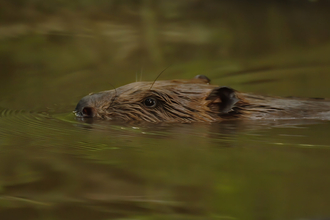
Free the beaver! A vision for beavers in England and Wales
Our Head of Communications, Erin McDaid, writes about the past, present and future of efforts undertaken by the Wildlife Trusts to bring…

Free the beaver! A new vision for beavers in England and Wales
The Wildlife Trusts say: end enclosures and take action for beavers to be wild!
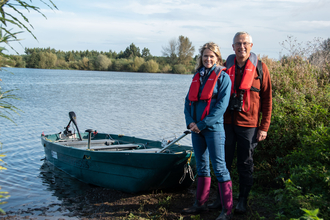
New boat to help reserve management at Idle Valley thanks to Metamorphosis Foundation
Metamorphosis Foundation come to the rescue – supporting purchase of electric boat to help care for Wildlife Trust’s largest nature…

Beaver kits born in Nottinghamshire!
Returning beavers have been anything but Idle since their return to Nottinghamshire. Wildlife Trust excited by earlier than expected…

Historic day for beavers in England
More support needed for landowners to enable beavers’ return, say The Wildlife Trusts and Beaver Trust
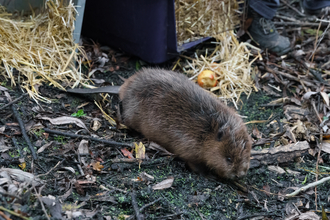
Public urged to go wild for beavers
Crucial moment for ‘nature’s engineers’ as consultation closes 17th November
